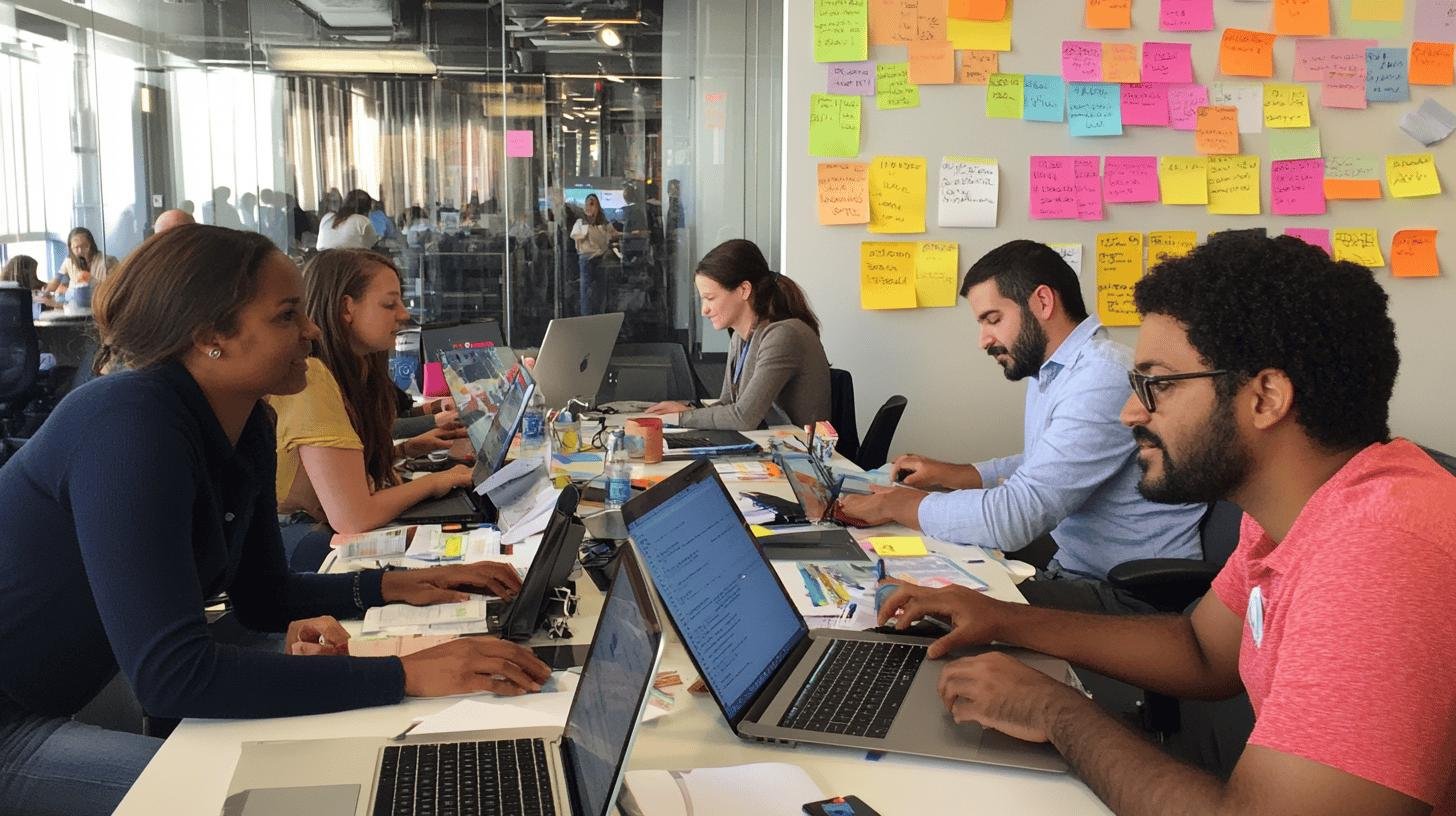Ever wonder if machines can be biased? You’d be surprised! AI, which is supposed to be smart and impartial, often mirrors our human quirks. It’s like teaching a robot to dance but only showing it tango—it’ll groove, but in a pretty predictable way. Our algorithms can sometimes carry the same prejudices we have, impacting critical areas like hiring and healthcare. We’ll break down what AI bias is, why it matters, and how we can fix it in this tech-chat. Ready to make AI play fair? Let’s find out how to avoid bias in AI!
Understanding AI Bias
AI bias happens when algorithms repeat human prejudices, leading to unfair outcomes. This issue arises because machine learning—technology powering AI—learns from data that may be biased. It’s like teaching a computer to think like us but only showing it one viewpoint. As a result, AI makes uneven decisions based on flawed assumptions.
Real-world examples show this problem clearly. In healthcare, AI systems may fail if they lack diverse patient data, often neglecting minorities. Hiring tools can prefer one gender over another. For instance, an Amazon hiring algorithm was biased against women since it trained on resumes mainly from men. Here’s where AI bias usually appears:
- Data: Skewed or incomplete data can lead to biased learning.
- Algorithms: Algorithms may inherit biases from their training data.
- Societal Biases: Societal prejudices often embed into AI systems.
Methods to Detect and Correct AI Bias

Detecting AI bias is crucial to avoid unfair decisions. Unnoticed biases can lead to unequal outcomes, like in loan or job interview processes, granting unfair advantages or disadvantages. Identifying and correcting these biases is vital for fair AI.
Diverse Data Sets
Tackling AI bias involves using both real-world and synthetic data. Real-world data reflects societal biases. Introducing unbiased synthetic data helps balance this out. This approach provides AI a broader view, reducing the chance of bias lurking in the data.
Regular Evaluation
Regular evaluations are like giving your car a tune-up. They ensure everything runs smoothly and catch issues early. By frequently reviewing data and algorithms, you can detect biases as they develop. It’s not a one-time task—regularly updating datasets and models is essential.
Transparent Algorithms
Transparency helps spot AI biases. When algorithms are transparent, identifying errors is easier. If AI’s decisions are a mystery, understanding them is nearly impossible. Open and understandable algorithms allow tracking decisions and revealing biases, ensuring AI fairness.
Lastly, having diverse data teams adds value. Teams with varied perspectives catch biases others might miss. Different backgrounds bring unique insights, helping identify biases and create inclusive solutions. This ensures AI systems serve everyone better.
Ethical Considerations in AI Development
Ethical frameworks act as moral compasses, guiding the design of fair, transparent, and data-protective AI systems. These frameworks are vital as they ensure AI systems don’t make biased decisions. Following ethical guidelines allows developers to build trust by respecting everyone’s rights and treating users fairly.
Transparency and Fairness in AI
How can AI be transparent and fair? It’s like opening a window into the AI’s decision-making process. By making algorithms understandable, we can track decisions and check for biases. Fairness means treating everyone equally. Transparent AI makes it easier to ensure equal treatment, which is crucial for ethical AI development.
Now, let’s discuss the societal impacts of AI bias. AI often reflects societal biases because it learns from existing data. Biased data can make AI amplify these prejudices. Responsible development practices are crucial. Developers must be mindful of the data used and its societal impact. This helps reduce the negative effects of biased AI decisions.
Case Studies: AI Bias in Real-World Applications

Case studies provide insight into AI bias in action, helping us learn what to avoid. Analyzing these examples reveals past mistakes, guiding better future practices. It’s like watching the blooper reel of AI’s greatest hits and misses. Let’s explore a few eye-opening cases.
Healthcare System Bias
In American healthcare, AI systems trained on non-representative data gave worse results for minorities. It’s similar to teaching the alphabet but missing letters—something goes wrong. This bias occurs when AI training data doesn’t reflect real-world diversity, leading to poor performance for underrepresented groups, a significant issue in healthcare.
Gender Bias in Corporate Representation
Consider searching “CEO” on Google Images and seeing mostly men in suits! A study showed 11% of results were women, reflecting AI picking up on stereotypes. Biased training data leads to AI skewed outcomes. It’s like having an incomplete map—you miss the full picture.
Learning from these cases is key to addressing AI bias. Training AI on diverse, representative data is crucial. Without the right data, AI won’t improve. Regularly monitoring AI performance helps spot bias early, ensuring fairness. Understanding these examples equips us to create AI that serves everyone equally.
Best Practices for Reducing AI Bias
Proactivity in AI is like having a superhero sidekick, preventing trouble before it starts. Proactive measures nip bias in the bud, ensuring AI makes fair decisions and affecting people’s lives positively. Implementing these steps helps ensure AI serves everyone fairly.
Strategies for Reducing Bias
- Fairness Metrics: These metrics act as report cards, grading AI on fairness. They help identify lurking biases, enabling necessary adjustments.
- Diverse Training Data: Teaching AI with only one type of data restricts learning. Diverse data offers a full-color perspective, reducing bias risk.
- Iterative Model Testing: Repeatedly testing AI models allows early bias detection. This continuous loop of testing, learning, and improving ensures readiness.
- End-User Feedback: Users provide valuable insights into AI performance. Surveys and feedback unveil unnoticed biases.
- Transparency in Decision-Making: Transparency illuminates the decision-making process, allowing identification and correction of biases.
Bias mitigation is an ongoing journey, not a one-time fix. As technology and society evolve, our approaches to reducing bias must adapt. Regular AI model reviews and updates ensure fairness. By staying alert and responsive, we contribute to more unbiased AI.
Regulatory and Legal Guidelines for Ethical AI

Governance in AI offers essential rules for fair and responsible operation. Without governance, AI might make unjust decisions, impacting lives. Strong governance practices ensure AI remains on track, fairly serving society.
Key Regulatory Frameworks
These frameworks guide AI, setting acceptable standards. They focus on transparency, fairness, and accountability. For instance, the General Data Protection Regulation (GDPR) in Europe enforces strict data protection, ensuring AI respects rights. Similar global regulations provide ethical AI development paths.
These regulations play a crucial role in unbiased AI development. By setting clear standards, they facilitate transparent, accountable AI systems. Tracing AI decisions reduces hidden biases, encouraging ongoing evaluation. Overall, guidelines act as safety nets, maintaining responsible, ethical AI development.
Conclusion
From understanding AI bias in machine learning to uncovering bias examples, we explored quite a bit! We dug into methods to correct these biases and the ethical chops needed for responsible AI.
Case studies showed us the real-world impact of unchecked biases, like those in healthcare and corporate images. We wrapped up with best practices for getting ahead of AI bias, plus a peek at the regulations keeping AI in check.
Knowing how to avoid bias in AI is crucial for building better tech. Here’s to making smarter, fairer machines!
FAQ
How to avoid bias in AI examples?
AI bias can be avoided by using diverse data sets, ensuring transparency in algorithms, and employing regular evaluations. These practices help align AI outputs with diverse and fair perspectives.
How to avoid bias in AI Python?
To avoid bias in AI when using Python, you should implement fairness checks, use equitable data sets, and test algorithms thoroughly. This approach helps maintain balanced and accurate results.
What are AI bias examples?
Examples of AI bias include racial bias in healthcare systems and gender bias in hiring algorithms. Such biases emerge when AI models are trained on non-representative data.
What is a first step toward mitigating bias in AI?
The first step in mitigating AI bias is identifying the sources of bias. This involves examining your data and algorithms for any disparities or skewed outcomes.
What are the types of bias in AI?
Types of bias in AI include data bias, algorithmic bias, and societal bias. These can affect AI model accuracy and fairness, reflecting human-prejudiced assumptions.




